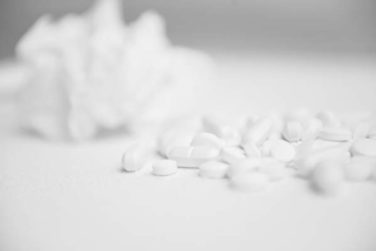AT THE EAST SCIENTIFIC ASSEMBLY
LAKE BUENA VISTA, FLA. (FRONTLINE MEDICAL NEWS) – Base deficit and lactate after resuscitation were measurably different based on the type of crystalloid solution used in a class I hemorrhage model.
Further, an award-winning prospective study found that, compared with lactated Ringer’s or no intravenous fluid, normal saline results in significantly higher postresuscitation sodium and chloride levels and significantly lower ionized calcium and bicarbonate.
Taken together, these derangements are important because blood gases are one of the first objective measurements performed in acute trauma patients, Dr. Samuel Wade Ross said at the annual scientific assembly of the Eastern Association for the Surgery of Trauma (EAST).
“We might actually be overestimating the amount of shock due specifically to the iatrogenic cause of crystalloid solutions,” he said. “Additionally, this goes beyond just trauma because all medicine – surgery, anesthesia, and critical care – use crystalloid. And it should be in the back of our minds when using normal saline that this contributes to acidosis and that lactated Ringer’s can falsely elevate lactate levels.”
The analysis involved 157 voluntary blood donors, who donated 0.5 L and were then randomly assigned to normal saline, lactated Ringer’s (LR), or no IV fluid. The percentage of total blood volume lost was about 11%, which is consistent with a class I hemorrhage model, said Dr. Ross of the Carolinas Medical Center in Charlotte, N.C.
Base deficit, which is used to guide the volume of fluid needed for trauma patients’ resuscitation, was similar before administration of normal saline, lactated Ringer’s, or no IV fluid (–0.24 vs. 0.33 vs. 0.04).
After fluid administration, however, the normal saline group had almost five times the base deficit of the no IV fluid group (–3.06 vs. –0.65) and almost 10 times the base deficit of the LR group (–3.06 vs. –0.34). The differences were statistically significant, even using a conservative statistical correction with a P value cutoff of 0.0167, he said.
Preresuscitation lactate levels also were similar in the LR, normal saline, and no IV groups (1.05 mmol/L vs. 1.12 mmol/L vs. 1.10 mmol/L).
Postresuscitation, however, lactate increased by roughly 50% in the LR group vs. the normal saline group (1.54 mmol/L vs. 1.0 mmol/L) and was elevated compared with no IV fluid (1.54 mmol/L vs. 1.36 mmol/L). Both findings were statistically significant (P < .0167).
This is the first time these differences have been quantified and runs contrary to the dogma that serum lactate does not increase with the use of LR because of enzymatic clearance of the molecule in the liver, said Dr. Ross, the EAST 2015 Raymond Alexander Residents Paper Competition winner.
“With ongoing shock, lactate rises and clinicians use that as a guide for further fluid resuscitation. Thus, lactate levels could be falsely elevated with LR use, and drive further decisions for unnecessary and potentially harmful additional resuscitation and procedures,” he said in an interview.
As noted above, use of normal saline rather than LR or no IV fluid resulted in significantly higher postresuscitation sodium (141.7 mmol/L vs. 139.8 mmol/L vs. 139.8 mmol/L) and chloride (107.3 mmol/L vs. 102.3 mmol/L vs. 102.9 mmol/L), and significantly lower ionized calcium (1.15 vs. 1.22 vs. 1.24), pH (7.32 vs. 7.34 vs. 7.36), and bicarbonate (23 mmol/L vs. 25.3 mmol/L vs. 24.6 mmol/L; all P values < .001).
“The two recommended isotonic crystalloid fluids used for hemorrhagic and other forms of shock – normal saline and lactated Ringer’s – have been in use since the 19th century and early 20th century,” senior author Dr. Ronald F. Sing said in an interview. “Despite the tremendous advances in shock and resuscitation, we have identified, and actually confirmed, potentially confounding factors related to both LR and [normal saline] for resuscitation. Our next goal is to examine other crystalloid solutions and their impacts not only on shock markers, but inflammatory markers,” he added.
Future studies also will use animal models to look at class II-IV hemorrhage and increased follow-up time.
The study was supported by the Carolinas Trauma Network. Dr. Ross and his coauthors reported having no financial disclosures.



